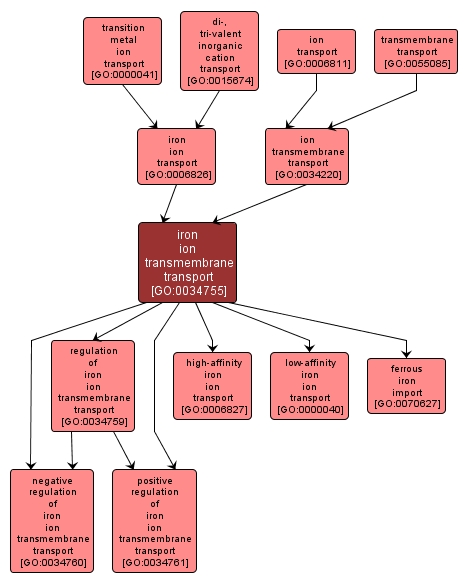GO TERM SUMMARY
|
| Name: |
iron ion transmembrane transport |
| Acc: |
GO:0034755 |
| Aspect: |
Biological Process |
| Desc: |
A process whereby an iron ion is transported from one side of a membrane to the other. |
Synonyms:
- transmembrane iron transport
|
|

|
INTERACTIVE GO GRAPH
|














